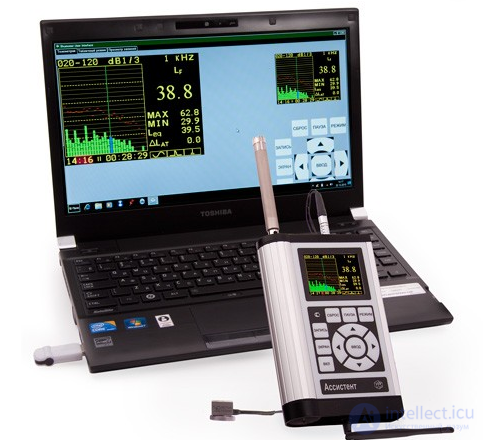Lecture
Automation of electro-radio measurements contributes to faster processing of a large number of measured parameters, increasing requirements for measurement accuracy and their speed (with limited ability of the operator in perception and processing large amounts of information) and, consequently, reducing the workload and role of the operator in the measurement process.
The transition to the construction of digital measuring instruments led to the creation of automated measuring systems using microprocessors. Automated measuring instruments consider autonomous non-programmable instruments and flexible measuring systems (GIS), built on the basis of digital technology.
Autonomous non-programmable devices operate according to a rigid program and are designed to measure certain signal parameters and circuit characteristics. In these devices, only part of the measurement operations are automatically performed, such as, for example, determining the polarity of the input signal and setting the limits of measurement.
Flexible measuring systems allow programmatically to rebuild the system to measure various physical quantities and change the measurement mode. In this case, the hardware of the measuring system does not change. By structural construction, GIS is divided into interface, microprocessor and computer-measuring.
The most powerful types of GIS are measuring and computing complexes (CPI), which are created by
using a special multi-conductor main in one measuring system of a computer, measuring devices and information display devices. Communication between the computer and all other nodes and their compatibility are ensured by using a combination of hardware, software and design tools.
A computer interface device with measuring instruments or any other external systems is called an interface. Sometimes this concept includes the software of the automated system. Typically, ICDs use standard devices (modules) connected to a common highway and standard interfaces (in Russia, these are interfaces such as IEC 625.1, CAMAC, etc.). At the same time, to solve a new metrological task, it is enough to change a part of the modules used as a source or receiver of information and software.
In microprocessor GIS all nodes are connected directly to the microprocessor backbone. Built-in microprocessors perform service operations, provide various measurement modes and determine a number of signal or circuit parameters. The operation of such devices is carried out in accordance with the programs incorporated in the storage device.
Currently, many measuring systems use personal computers. This is primarily due to the fact that the computer makes the measuring system extremely flexible, since the user can easily change his software. Computer-measuring systems combine measuring, processing, computing and controlling tools on the personal computer's own bus.
Примеры

АРМ (автоматизированное рабочее место) для измерения шума и вибрации
1. How do autonomous non-programmable devices work?
2. What are autonomous non-programmable devices for?
3. What are the flexible measuring systems by structure?
4. What is called interface?
Comments
To leave a comment
METROLOGY AND ELECTROradio-measurement
Terms: METROLOGY AND ELECTROradio-measurement